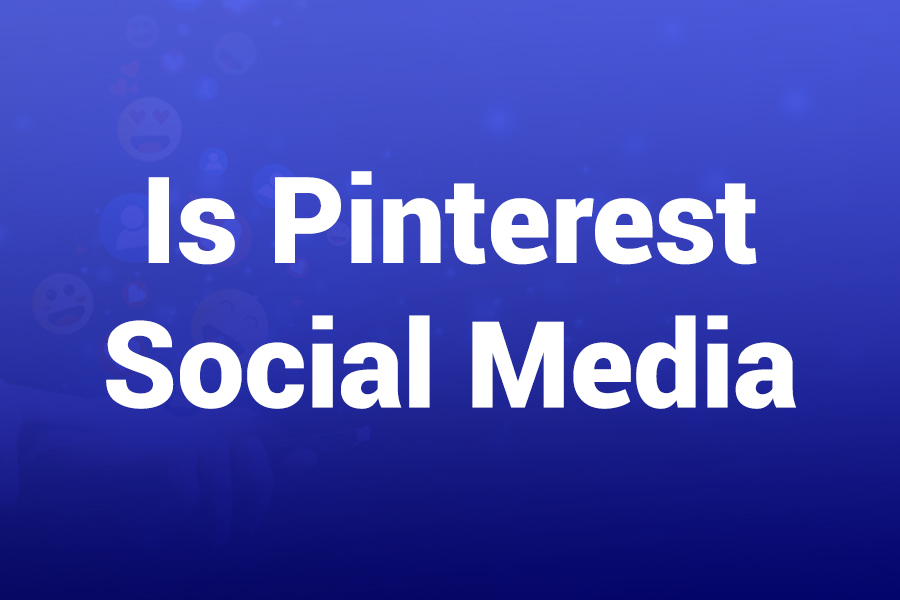Pinterest often sparks debate: is Pinterest social media or just a creative tool? Many say it sits somewhere between a visual search engine and a social platform.
In this article you will learn the arguments on both sides, how Pinterest actually behaves today, where it fits in the digital landscape, and what marketers and users should treat it as. in this article you’ll discover definitions, user behavior, stats, and a clear position.
What Defines Social Media?
To decide whether Pinterest qualifies as social media, we must start with what “social media” means. Social media platforms often include these traits:
- Real-time interaction (likes, comments, shares)
- Social networking (connecting with other users, following, messaging)
- User-generated content promoted by social graph (friends, followers)
- Emphasis on visibility, engagement metrics
Examples like Facebook, Instagram, Twitter emphasize interaction and personal sharing. Social platforms tend to keep users inside the network rather than pushing external links.
Pinterest’s Core Identity
Pinterest began as a visual bookmarking tool—users “pin” images or content to boards sorted by themes or interests. Over time it gained social features (followers, comments, saves), yet its core remains curation and discovery. Today it calls itself a “catalogue of ideas” focused on inspiration and visual content.
In recent reports, Pinterest claims over 550 million monthly active users globally, making it one of the larger platforms in the digital ecosystem. It also drives significant referral traffic to external sites.
Arguments Why Pinterest Is Social Media
Several features make a strong case that Pinterest qualifies as a social media platform:
- User interaction
People can follow other users and boards, like or comment on pins, and repin content to their own boards. These mirror the interactions seen on social networks. - User-generated content
Like Instagram or TikTok, content comes from individual users. Brands and creators publish pins regularly, often leveraging Pinterest as a content hub. - Social network elements
Pinterest fosters communities around topics like fashion, recipes, travel, home decor, and crafting. Boards and group boards act like mini social groups. - Discovery and feed algorithms
Pinterest uses an algorithmic “home feed” similar to social platforms—suggesting content based on user behavior and interests.
Because of those, many consider Pinterest a unique but valid variant of social media.
Arguments Why Pinterest Isn’t Fully Social Media
Despite social features, many marketers and analysts argue it falls short of standard social media definitions:
- Less emphasis on personal sharing: Users rarely use Pinterest to broadcast what they did today, unlike Facebook or Instagram.
- Focus on external links: Pinterest encourages users to click through to blogs, e-commerce sites or recipes. Its structure often drives users away from staying in the app.
- Limited direct interaction pressure: Engagement like reactions, comments, and conversation threads are less central than on other social platforms.
- Core function as discovery engine: Pinterest heavily positions itself as a visual search tool. It organizes content by user interest and keyword queries more than by social graphs.
Some describe Pinterest as a hybrid or “unicorn” platform: part visual search, part social curation.
Where Pinterest Falls on the Spectrum
Pinterest does not cleanly fit into a single category. It functions well in a gray zone:
- As a visual search and inspiration engine, it competes with tools like Google Images.
- As a content discovery platform, it helps users explore ideas, trends, and products.
- As social media-lite, it offers moderate social features without the full social pressure or emphasis on interaction.
Thus, it blends characteristics of search engines, bookmarking tools, and social networks.
User Behavior and Usage Patterns
Data shows that users often treat Pinterest as a personal tool. They pin items for future use—home design, recipes, fashion, and projects. Few users log on simply to check friends’ updates. In surveys, many say they don’t care about follower counts or engagement metrics.
Content tends to live longer on Pinterest, unlike the ephemeral nature of posts on other social platforms. Pins often gain views and engagement months or years after posting, making its content longevity exceptional.
Recent Trends and Growth
Pinterest continues to expand. In recent years, the platform grew user base by 7.5% year-over-year, outpacing growth on many other social media platforms. It also reported Q4 2024 revenue topping $1.15 billion and record user growth.
It’s also strengthening e-commerce features—“Shop the Look,” product pins, and integrations that allow users to purchase directly or follow products. These moves push Pinterest more toward a commerce-oriented discovery engine rather than a social forum.
What This Means for Marketers
Marketers must treat Pinterest differently than Facebook or Instagram. Best practices include:
- Keyword and visual SEO optimization: Because users search visually, pin titles, descriptions, and images matter more than relationships or viral loops.
- Evergreen content: Pins perform over time, so content should remain relevant.
- External traffic focus: Pinterest works as an acquisition channel by sending users off platform to your content or product.
- Less focus on social metrics: Shares and comments matter less than click-throughs and conversions.
Misnaming Pinterest as “just another social media” can lead to wasted strategy.
Conclusion
Yes, Pinterest Is Social Media—But Different. Pinterest qualifies as social media in that it supports user content creation, social interactions, and community. However, its core is discovery, search, and lasting visual content. It sits at a hybrid junction of social platform and visual engine.
So, is Pinterest social media? Yes—but not like Facebook or Instagram. It offers curated visual discovery first, social features second. For U.S. audiences, treating it as a unique, discovery-first network maximizes results.

